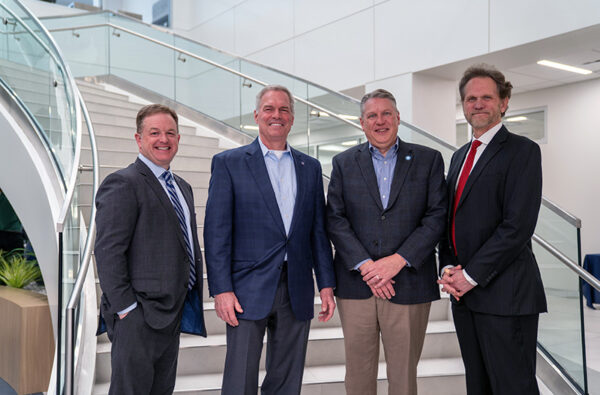“Sure wish it wasn’t such a long walk from registration to radiology…,” “It would be better if patients could register for outpatient tests in the outpatient area…,” “May I suggest a registration desk in radiology?”
Feedback like this inspired a recent KATA board at Baptist Union City that is saving outpatients significant time and steps, according to Baptist Union City Administrator and CEO Skipper Bondurant. “We set a 12-month goal and achieved significant results in just eight months.”
KATA: Point-of-Service Registration in Radiology
- Current condition: Outpatients registering at the main admissions office in the front of the hospital and then walking 359 steps to the radiology department.
- The challenge: To establish point-of-service registration in radiology within 12 months, allowing patients to avoid the long walk through the hospital.
- Obstacles: Registration training for radiology staff, lack of computer access, parking issues, patient and physician education, patient privacy, and obtaining necessary lab equipment so patients can have lab work done without leaving radiology.
- Results: In just eight months, point-of-service registration in radiology is running smoothly, with much of the pre-registration process now handled by phone.
“Previously it might have taken 10 to 15 minutes to get an outpatient through admissions, and now that’s down to a few minutes,” said Bondurant. “With up to 120 radiology patients a day, you are saving a lot of minutes.” For example, the total time for a mammography procedure went from 59 to 18 minutes—a savings of 1,800 hours per year. “And walking the gemba revealed we had reduced the number of steps per patient from 359 to 44, a yearly reduction of 1,869 miles. This is especially significant as many of these patients have mobility issues, are avoiding potential falls, or struggling from a health perspective.”
KATA: Food & Nutrition Satisfaction Scores
A second KATA board involves increasing food quality satisfaction scores, focusing on food temperature, quality, and the courtesy of the food & nutrition staff member who delivers the food. The team first had to experiment its way to getting useful, timely patient feedback to understand what changes needed to happen.
“One exceptional outcome is the development of a new, attractive menu on the tray of each patient,” said Bondurant. “This menu contains descriptions of each type of diet, such as clear and full liquids, heart healthy/cardiac/low-salt, mechanical soft, and so on. This helps patients better understand why certain items are on their tray.”
Frequent experiments, both failed and successful, have yielded an improvement in patient satisfaction scores of 40 percent in just nine months. New KATA boards involving patient satisfaction are also underway. “Patient care and patient satisfaction are what it is all about,” said Bondurant.






